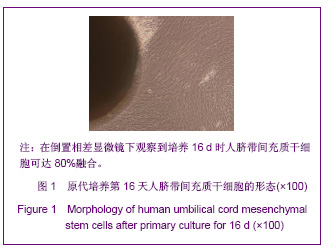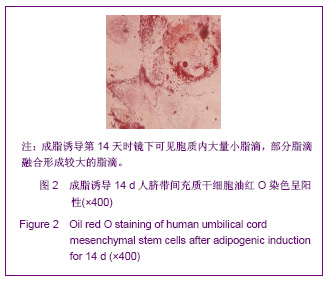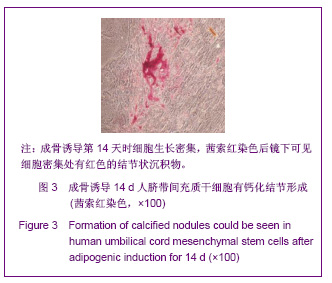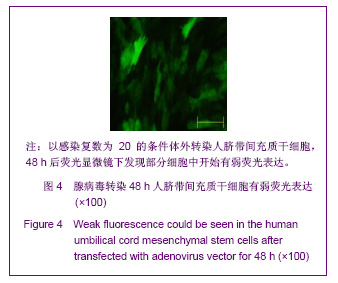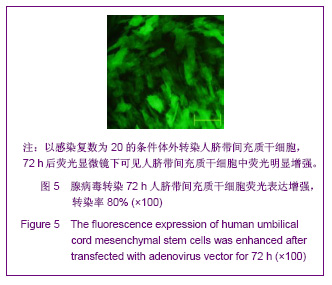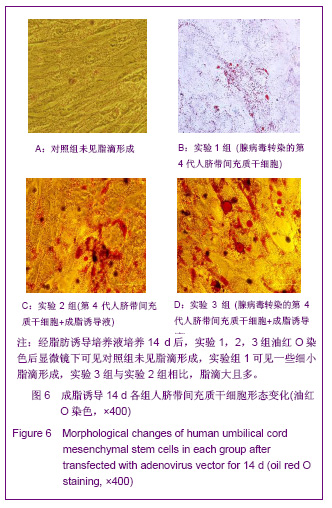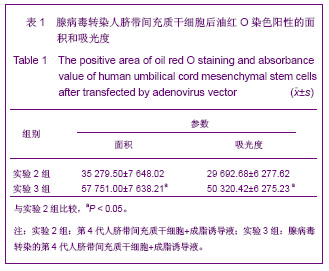中国组织工程研究 ›› 2013, Vol. 17 ›› Issue (6): 999-1003.doi: 10.3969/j.issn.2095-4344.2013.06.009
• 脐带脐血干细胞 umbilical cord blood stem cells • 上一篇 下一篇
携带人胰岛素基因腺病毒载体转染人脐带间充质干细胞及其成脂分化
李世龙1,刘 毅2,惠 玲3
- 1兰州大学第二临床医学院,甘肃省兰州市 730050
2解放军兰州军区兰州总医院,全军烧伤整形外科中心,甘肃省兰州市 730050
3解放军兰州军区兰州总医院,甘肃省干细胞与基因药物重点实验室,甘肃省兰州市 730050
Adipogenic differentiation of human umbilical cord mesenchymal stem cells transfected by insulin gene-modified adenovirus vector
Li Shi-long1, Liu Yi2, Hui Ling3
- 1 The Second Clinical Medical College of Lanzhou University, Lanzhou 730050, Gansu Province, China
2 Center of Military Burns and Plastic Surgery, Lanzhou General Hospital of Lanzhou Military Command of Chinese PLA, Lanzhou 730050, Gansu Province, China
3 Gansu Provincial Key Laboratory of Stem Cells and Gene Drugs, Lanzhou General Hospital of Lanzhou Military Command of Chinese PLA, Lanzhou 730050, Gansu Province, China
摘要:
背景:胰岛素是成脂诱导剂的重要组成成分。然而胰岛素存在半衰期,会随着体内代谢不断灭活及降解,植入体内的细胞或材料无法像体外那样以更换培养液来达到目的。实验拟通过转染胰岛素基因,使转染后的干细胞稳定分泌胰岛素,促进其成脂分化。 目的:探讨携带人胰岛素基因腺病毒载体转染人脐带间充质干细胞后对其成脂分化能力的影响。 方法:取第3代人脐带间充质干细胞,以感染复数为20转染腺病毒载体。实验分为4组:对照组为第4代人脐带间充质干细胞;实验组1为腺病毒转染的第4代人脐带间充质干细胞;实验组2为第4代人脐带间充质干细胞+成脂诱导液;实验组3为腺病毒转染的第4代人脐带间充质干细胞+成脂诱导液。 结果与结论:转染48 h后实验组1和实验组3的人脐带间充质干细胞在荧光显微镜下显现弱荧光,72 h后荧光较强。经脂肪诱导培养液培养14 d后,实验组1,2,3油红O染色后显微镜下呈红色,对照组未见脂滴形成,实验组1可见一些细小脂滴形成;实验组3与实验组2相比,脂滴大且多,定量分析显示,实验组3油红O染色阳性的面积和吸光度大于实验组2(P < 0.05)。由此说明携带人胰岛素基因腺病毒载体转染人脐带间充质干细胞后可促进其成脂能力。
中图分类号:
